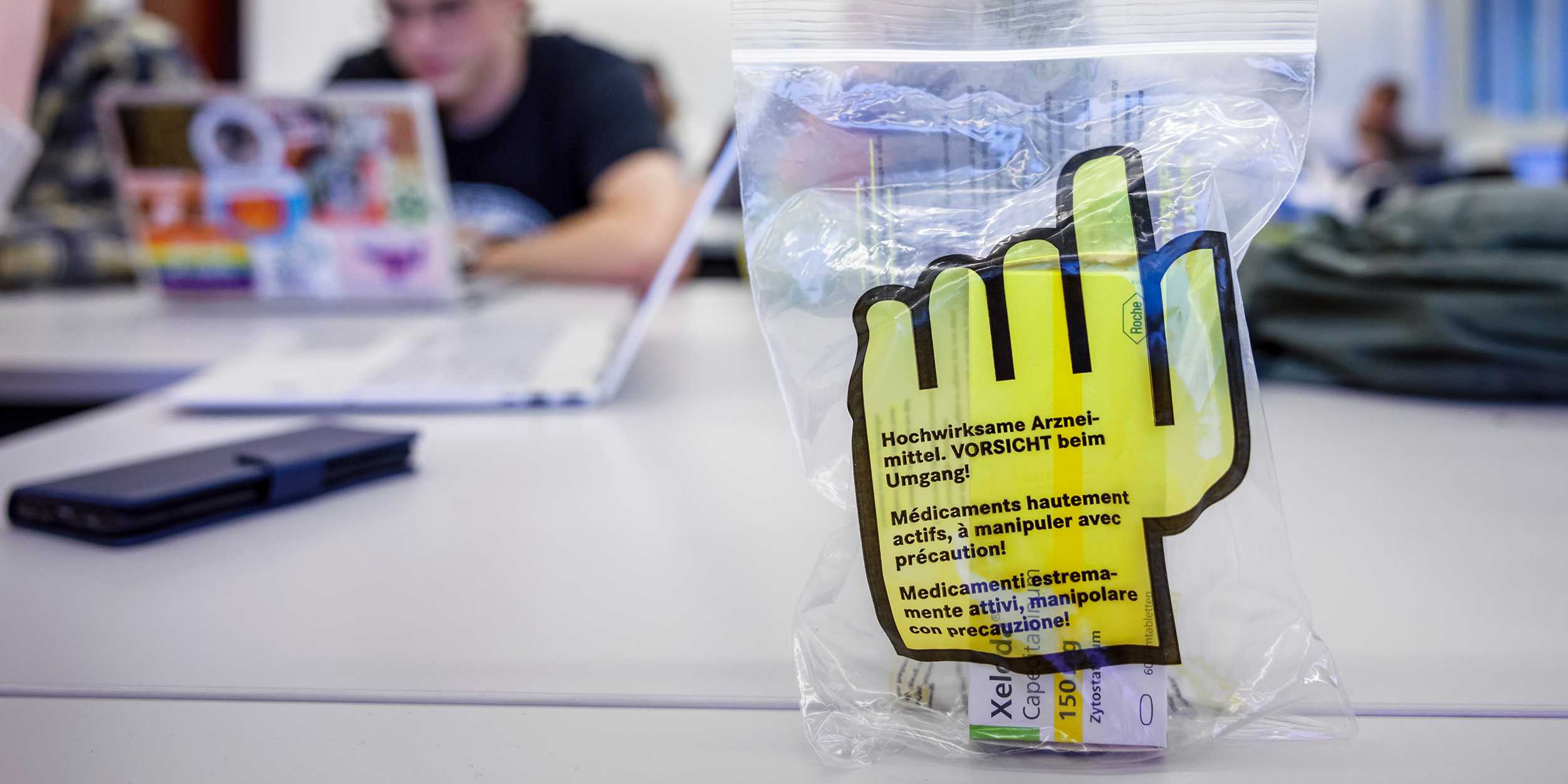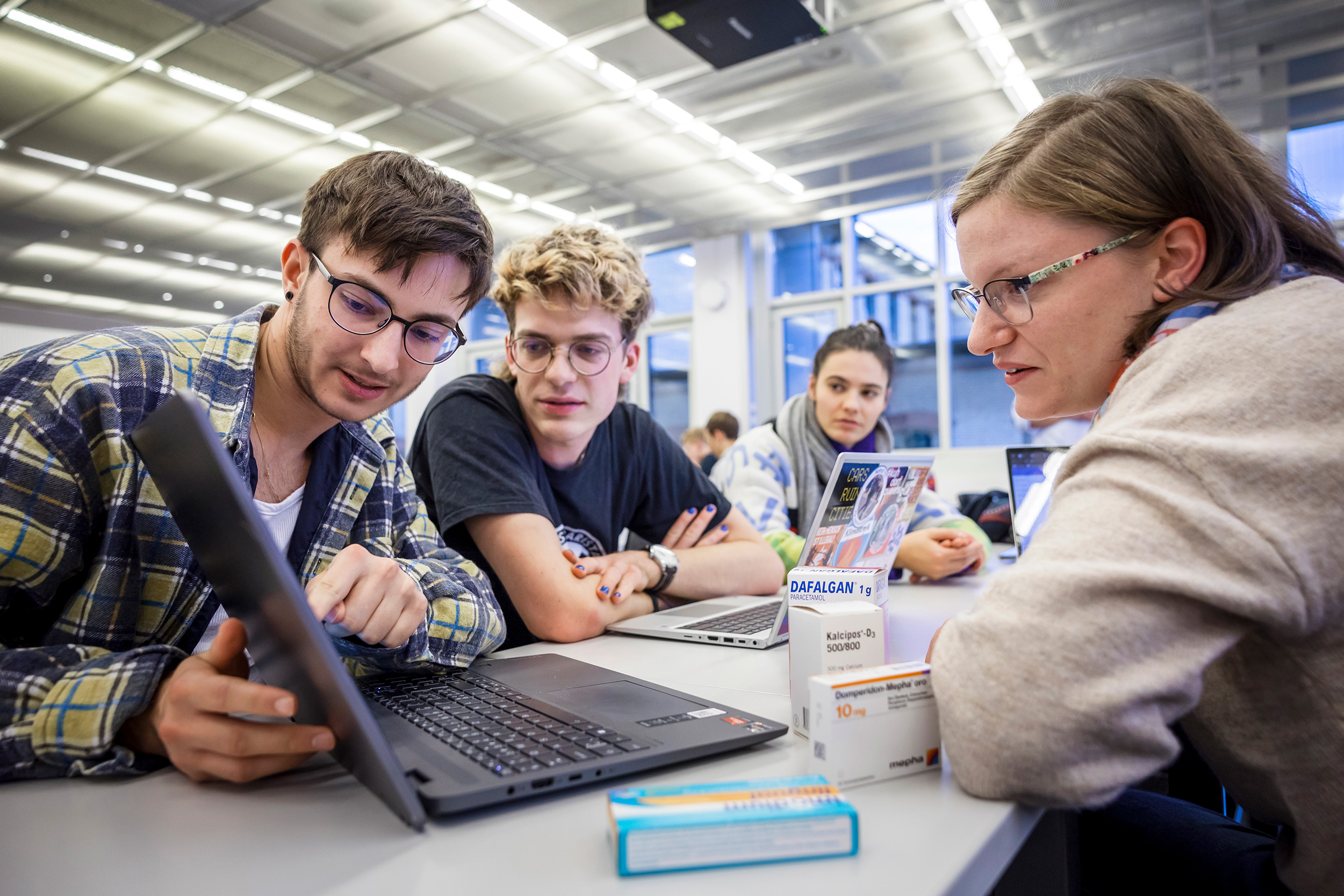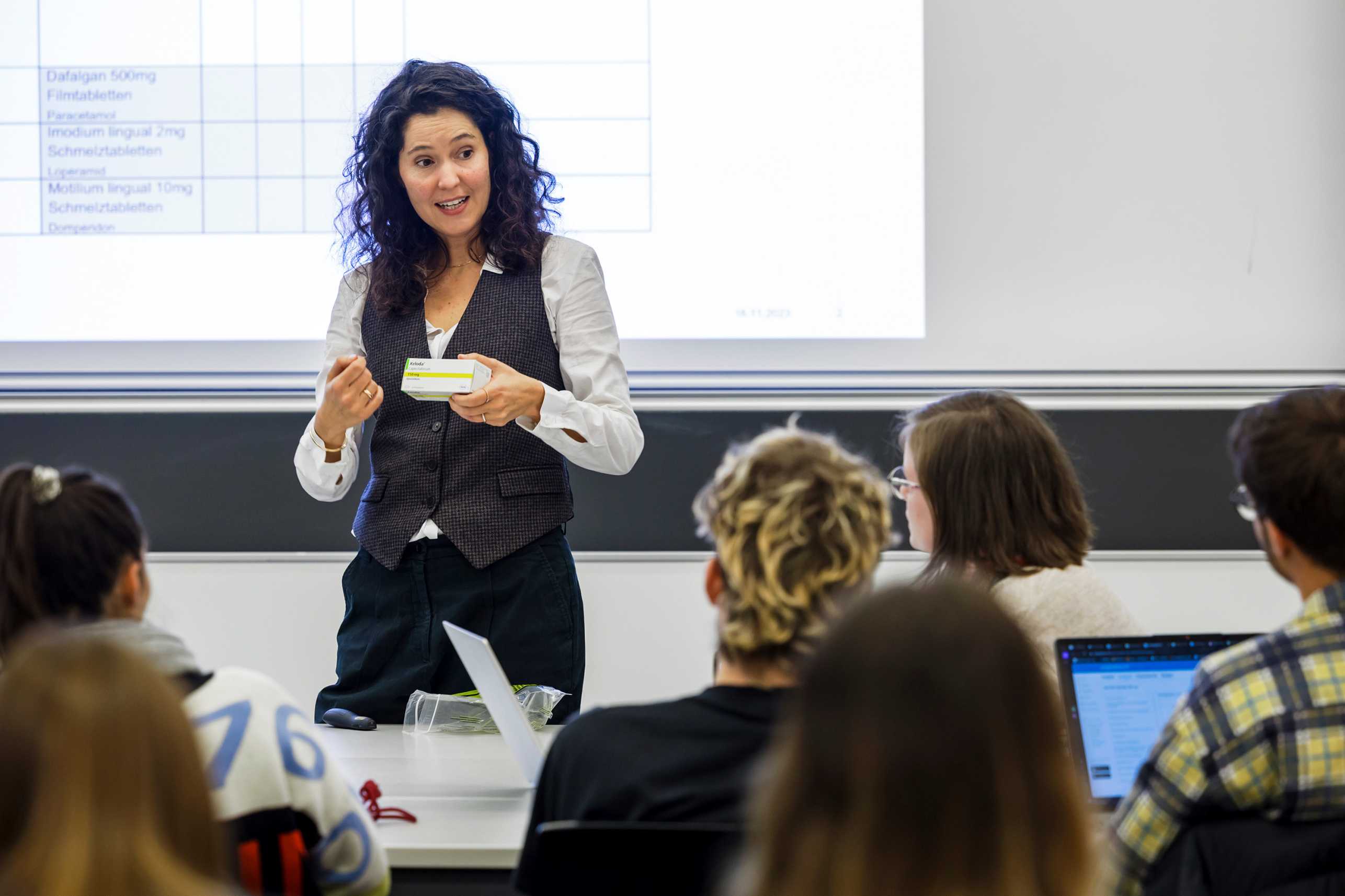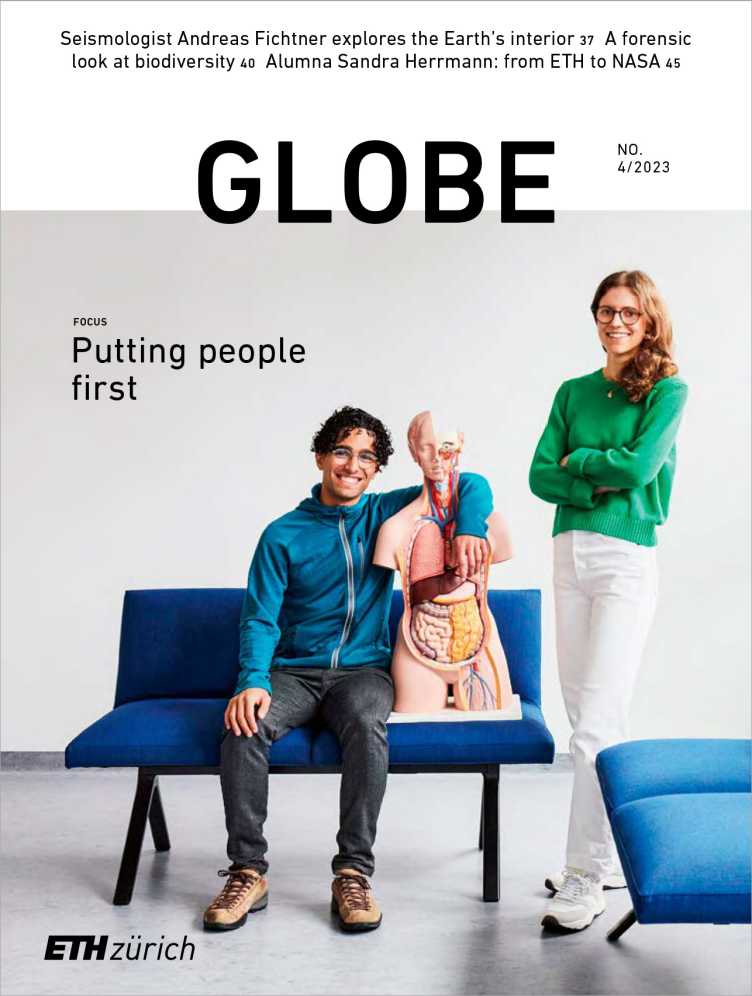Improving patient safety
On the road to recovery, patients come into contact with clinicians from a whole range of disciplines. The importance of targeted collaboration between these disciplines is something medical students learn early on at ETH Zurich.

When illness strikes, people generally turn to a doctor for help. He or she prescribes the appropriate medicine and determines whether any other treatment might be necessary. The relationship between patient and doctor therefore plays a major role in recovery. Yet this is just one of several important relationships in this context. While on the road to recovery, patients come into contact with healthcare professionals from many different disciplines, each of whom applies their unique skills and techniques to help the patient get better.
Take the example of a 56-year-old female patient who is suffering from bowel cancer with liver metastases. Various medical tests confirm that surgery is the only option, and a resection is performed to remove the rectum. The patient then begins a course of chemotherapy, which is agreed upon in consultation with the attending doctor. At the same time, this case also involves many other aspects: the removal of the patient’s rectum means that she needs a colostomy, a surgically created opening in the abdomen. She therefore receives support from a specialist stoma nurse who explains how the colostomy bag must be changed several times a day and shows her how to care for the skin around the stoma. By helping the patient become accustomed to this artificial bowel opening, the nurse becomes a further important point of contact. The patient also makes regular visits to the pharmacy to get advice on taking her medication and alleviating the adverse side-effects of chemotherapy.
Before the patient leaves hospital, the doctor, specialist nurse and social worker arrange a meeting with the patient and her relatives. The woman is told how to continue her treatment at home, and the social worker lists the available home-care services and explains what is covered by her health insurance fund. Back in her flat, she is supported by the community health team, Spitex. Eventually, doctors tell the 56-year-old patient that she will require further surgery and another round of chemotherapy. At this point, she chooses to supplement her treatment with complementary medicine, but her condition deteriorates and she decides to start palliative care. Her care coordinators set up an interprofessional meeting to which her family is also invited.
“Treatment is teamwork and should be delivered in a patient-centred way.”Jörg Goldhahn
This case study illustrates how multiple healthcare disciplines can work together to meet a patient’s needs. The idea is to integrate the patient within a network of medical and healthcare professionals who assist her in her recovery. Studies show that seamless interaction between the various disciplines increases the quality of patient care and patient safety while also reducing costs. With many healthcare services increasingly being provided on an outpatient basis – that is, without an overnight stay in hospital – a holistic, interdisciplinary approach to care is becoming more and more important.
Exemplary teamwork
In practice, however, integrated and well-coordinated patient care is far from being the rule. Overwork, poor coordination and staff shortages all hamper interdisciplinary cooperation. For patients, the processes involved often appear confused and inconsistent. Sick individuals are concerned solely with their own health, not with how health might be defined according to different professions.
“Treatment is teamwork and should be delivered in a patient-centred way,” says ETH professor Jörg Goldhahn. He works at the Institute of Translational Medicine, which aims to take research findings from bench to bedside – in other words, from the laboratory research setting into clinical practice. Goldhahn also serves as Director of Studies for the Bachelor of Human Medicine at ETH Zurich, which was launched in 2017. The team responsible for this ETH Bachelor’s programme developed a new training module that focuses on interprofessional collaboration from the patient’s perspective. They created the module in a joint project with Kantonsspital Uri, the nursing college Berner Bildungszentrum Pflege and the coordinators of pharmacy-related degree programmes at ETH. “It’s modelled on the kind of teamwork that is common in engineering; we took this tried-and-tested approach and applied it to the healthcare sector,” says Goldhahn.

This joint module gives medical, pharmacy and nursing students an insight into the expertise and working methods of other healthcare disciplines and shows them the roles and responsibilities these professions have in patient care. “By bringing together medical, pharmacy and nursing students on the same course, we encourage them to learn from and about each other. It helps them see how important it is to view the various aspects of patient care not in isolation, but from an integrated, patient-centred perspective,” says Claudia Schlegel. As Co-Leader of Training and Transfer at the Berner Bildungszentrum Pflege, she played a key role in designing the interprofessional course as a member of the ETH Bachelor of Human Medicine project team.
A doctor’s education should be based on what they will need in the future, says Goldhahn: “Working in interprofessional teams will be even more common than it is today. We want students of medicine to prepare for that environment early on.” The course is taught to ETH medical students in their fifth semester over 12 afternoon sessions.
First-hand experience
Real-life situations form the basis for this interprofessional training. As well as experiencing births together with midwifery students, the medical students develop drug therapies with pharmacy students and learn how doctors and nurses can work together to develop patient treatment plans. The course also includes sessions at Kantonsspital Uri and at GP practices. The point of these visits is for students to see for themselves what collaboration means under real-life conditions and to observe the practical challenges that medical professionals face at the interfaces and during handovers.
“Students have no difficulty in developing an interdisciplinary understanding of patient care.”Claudia Schlegel
At the Bern and Aarau nursing colleges, medical students practice how to draw up a patient discharge plan together with nursing students and simulated patients – that is, people trained to play a specific patient role which allows students to practice their communication and consultation skills. This activity helps the students see things from the perspective of other professions and from that of the patient. They also learn to express their opinions within an interprofessional team in such a way that their observations and considerations are incorporated in the final decision on which treatment to recommend for a patient.
The optimal dose
The joint modules for Bachelor’s students in Human Medicine and Master’s students in Pharmacy are based on the same premise. Doctors and pharmacists are both members of the medical profession and have specialist knowledge of medicines, so it makes sense for both sides to attempt to understand and appreciate each other’s expertise. Doctors tend to look at how a drug can be applied to treat a specific disease in the
human body, while pharmacists tend to focus on the active ingredients a medicinal product contains. “We show students how interprofessional communication between doctors and pharmacists can help identify the optimal dose, and how to avoid undesirable side-effects or risky interactions when combining several drugs,” says Elvan Kut. A lecturer and programme coordinator on the ETH Master’s programme in pharmacy, Kut also works as a pharmacist in Zurich.
When it comes to drug therapy, patient safety is a vital part of the treatment process. That’s why medical, pharmacy and nursing students all take this subject together – because valuable feedback on therapy is equally likely to come from nurses and physiotherapists. This feedback is particularly helpful in the case of complex or chronic complaints such as cardiovascular disease, cancer, dementia, chronic respiratory disease and diabetes, all of which cannot be completely cured and require repeated treatment. In order to avoid errors in a patient’s course of treatment, it is vital that all the clinicians involved feel able to express their concerns if they notice something is wrong. However, this willingness to speak up requires a high degree of trust between different professions and is sometimes hampered in practice by interpersonal issues or organisational hierarchies.

Communication challenges
In some cases, circumstances can make it hard to address sensitive aspects of a patient’s treatment, as Abinaa Senthilrajan knows all too well. She completed her Bachelor’s degree in Human Medicine at ETH this year and is now studying medicine in Lugano. One of her cases involved a supermarket employee who was so badly affected by Covid-19 that doctors had to put her in an induced coma for two weeks. She struggled to wake from the coma and continues to suffer from long Covid today. Interprofessional collaboration on her case ran smoothly despite the disruption caused by the pandemic, but understanding the patient’s wishes and concerns proved to be difficult. Her knowledge of German was extremely basic, and her daughter was unable to visit as often as necessary due to the pandemic restrictions. “Communication is a vital factor and forms the basis of any successful medical treatment,” says Senthilrajan.
“What we’ve seen so far suggests that students have no difficulty in adopting the perspective of patients and healthcare professions and developing an interdisciplinary understanding of patient care,” says Schlegel. “They see that all medical and healthcare professions work for the benefit of patients, even though they use different methods to achieve this.”
Globe Putting people first

This text appeared in the 23/04 issue of the ETH magazine Globe.
Download Read whole issue (PDF, 2.7 MB)
Comments
No comments yet